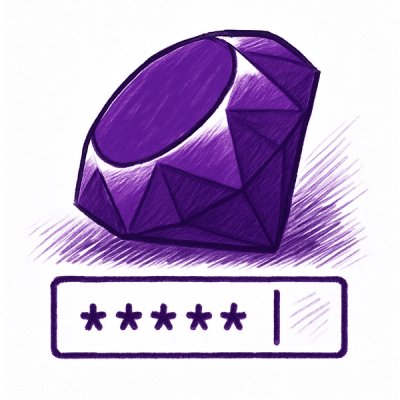
Security News
npm Adopts OIDC for Trusted Publishing in CI/CD Workflows
npm now supports Trusted Publishing with OIDC, enabling secure package publishing directly from CI/CD workflows without relying on long-lived tokens.
connect-web-sdk
Advanced tools
The Mastercard Open Banking Connect Web SDK provides an easy way for developers to integrate Mastercard Open Banking Connect into their web application. It supports both the embedded experience via iframe or through a popup window.
npm install connect-web-sdk
import { Connect, ConnectEventHandlers, ConnectOptions, ConnectDoneEvent, ConnectCancelEvent, ConnectErrorEvent, ConnectRouteEvent } from 'connect-web-sdk';
export class ConnectComponent {
connectEventHandlers: ConnectEventHandlers = {
onDone: (event: ConnectDoneEvent) => { console.log(event); },
onCancel: (event: ConnectCancelEvent) => { console.log(event); },
onError: (event: ConnectErrorEvent) => { console.log(event); },
onRoute: (event: ConnectRouteEvent) => { console.log(event); },
onUser: (event: any) => { console.log(event); },
onLoad: () => { console.log('loaded'); }
};
connectOptions: ConnectOptions = {
overlay: 'rgba(199,201,199, 0.5)'
};
constructor() {
Connect.launch(
'CONNECT_URL',
this.connectEventHandlers,
this.connectOptions);
}
}
import { Connect, ConnectEventHandlers, ConnectOptions, ConnectDoneEvent, ConnectCancelEvent, ConnectErrorEvent, ConnectRouteEvent } from 'connect-web-sdk';
export class ConnectComponent {
connectEventHandlers: ConnectEventHandlers = {
onDone: (event: ConnectDoneEvent) => { console.log(event); },
onCancel: (event: ConnectCancelEvent) => { console.log(event); },
onError: (event: ConnectErrorEvent) => { console.log(event); },
onRoute: (event: ConnectRouteEvent) => { console.log(event); },
onUser: (event: any) => { console.log(event); },
onLoad: () => { console.log('loaded'); }
};
connectOptions: ConnectOptions = {
popup: true,
popupOptions: {
width: 600,
height: 600,
top: window.top.outerHeight / 2 + window.top.screenY - (600 / 2),
left: window.top.outerWidth / 2 + window.top.screenX - (600 / 2)
}
};
constructor() {
Connect.launch(
'CONNECT_URL',
this.connectEventHandlers,
this.connectOptions);
}
}
| Event Type | Description |
|---|---|
| onLoad | Called when the Connect web page is loaded and ready to display |
| onDone | Called when the user successfully completes the Connect application |
| onCancel | Called when the user cancels the Connect application |
| onError | Called when an error occurs while the user is using the Connect |
| onRoute | Called with the user is navigating through the screens of the Connect application |
| onUser | Called when a user performs an action. User events provide visibility into what action a user could take within the Connect application |
| onUrl | Called when a URL event is triggered from the Connect application. If provided, the SDK will not handle URL events automatically, and clients must manage the logic themselves. If not provided, the SDK will handle URL events by default. The default SDK behavior remains unchanged if the onUrl handler isn't supplied. |
To customize how URL events are handled in your application, you can provide an onUrl handler in your Connect Event handlers. When provided, this handler gives you full control over how URLs are opened and closed, rather than relying on the SDK's default popup behavior.
Here is an example of implementing a custom onUrl handler:
connectEventHandlers: ConnectEventHandlers = {
onDone: (event: ConnectDoneEvent) => { console.log(event); },
onCancel: (event: ConnectCancelEvent) => { console.log(event); },
onError: (event: ConnectErrorEvent) => { console.log(event); },
onRoute: (event: ConnectRouteEvent) => { console.log(event); },
onUser: (event: any) => { console.log(event); },
onLoad: () => { console.log('loaded'); },
onUrl: (type, url) => {
if (type === 'OPEN' && url) {
console.log(`Opening URL: ${url}`);
// Custom logic to open a URL
window.open(url, 'targetWindow', 'width=600,height=600');
} else if (type === 'CLOSE') {
console.log('Closing popup');
// Custom logic to close popup
window.close()
}
}
};
Connect.launch(connectURL, connectEventHandlers, connectOptions);
type: A string literal that can be either 'OPEN' or 'CLOSE'
url: An optional string parameter that is only present when type is 'OPEN'. This represents the URL to be opened.
Please Note: If you provide a handler for the onUrl event, you must manage popups gracefully yourself. The Connect SDK will not handle popups for you if this handler is provided. Only provide a handler for this event if you want to diverge from the default behavior.
| Option | Description |
|---|---|
| overlay | Changes the overlay color where the Connect modal is displayed (only for iframe, defaults to rgba(0,0,0,0.8)) |
| selector | CSS selector in which Connect should be embedded to. Connect will expand to fill the container's dimensions, the element's position must not be static. Connect will be displayed in a modal by default |
| node | Element in which Connect should be embedded to. Connect will expand to fill the container's dimensions, the element's position must not be static. Connect will be displayed in a modal by default |
| popup | Indicates if Connect should be displayed in a popup (defaults to false) |
| popupOptions | Used to configure the popup's width/height and positioning (top/left) |
| redirectUrl | The URL to redirect back to your mobile app after completing an FI’s OAuth flow (universal link on iOS, app link on Android). This parameter is only required for App to App. |
In order to return control back to your application after a customer completes an FI’s OAuth flow, you must specify a redirectUrl value. This URL is used to redirect back to your mobile app after completing an FI’s OAuth flow (this should be a universal link on iOS or an app link on Android). Please note: This is only applicable for App to App
Here is an example of a universal link redirectUrl within your code:
connectOptions: ConnectOptions = {
popup: true,
popupOptions: {
width: 600,
height: 600,
top: window.top.outerHeight / 2 + window.top.screenY - (600 / 2),
left: window.top.outerWidth / 2 + window.top.screenX - (600 / 2)
},
redirectUrl = "https://youruniversallink.com";
};
Connect.launch(connectURL, connectEventHandlers, connectOptions );
When the user of your application is finished with Connect you need to make sure to clean up the Connect instance by calling the destroy method. For example, if you have a ReactJS application you would call destroy in the unmount of your component.
Connect.destroy()
2.3.0 (Latest)
FAQs
Mastercard Open Banking Connect Web SDK
The npm package connect-web-sdk receives a total of 6,806 weekly downloads. As such, connect-web-sdk popularity was classified as popular.
We found that connect-web-sdk demonstrated a healthy version release cadence and project activity because the last version was released less than a year ago. It has 1 open source maintainer collaborating on the project.
Did you know?

Socket for GitHub automatically highlights issues in each pull request and monitors the health of all your open source dependencies. Discover the contents of your packages and block harmful activity before you install or update your dependencies.

Security News
npm now supports Trusted Publishing with OIDC, enabling secure package publishing directly from CI/CD workflows without relying on long-lived tokens.

Research
/Security News
A RubyGems malware campaign used 60 malicious packages posing as automation tools to steal credentials from social media and marketing tool users.

Security News
The CNA Scorecard ranks CVE issuers by data completeness, revealing major gaps in patch info and software identifiers across thousands of vulnerabilities.